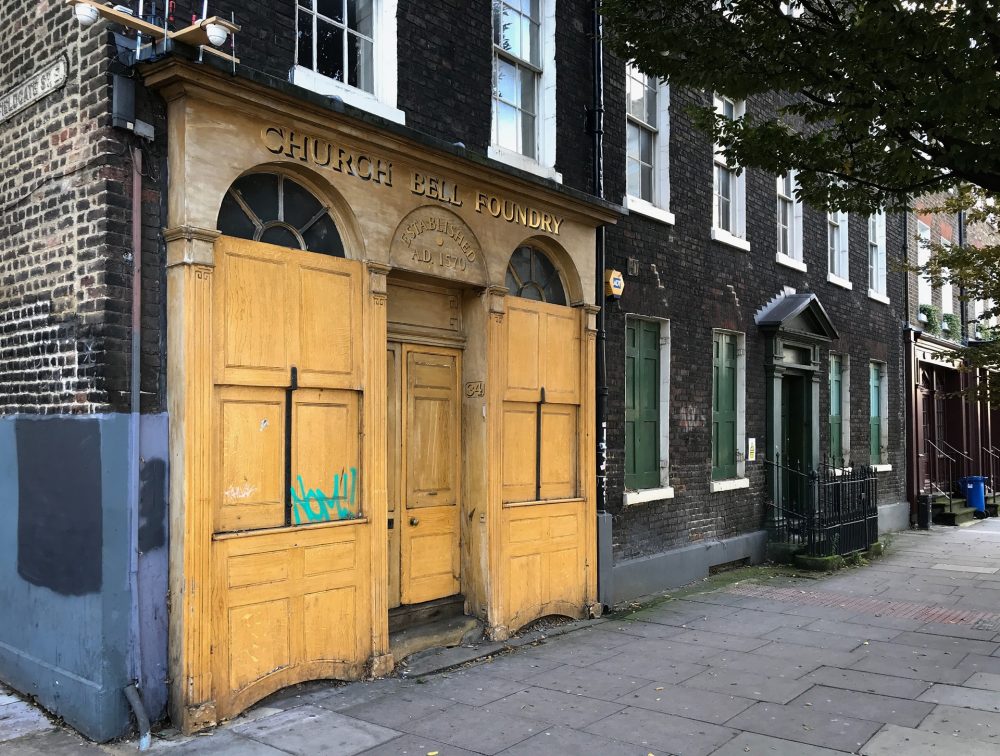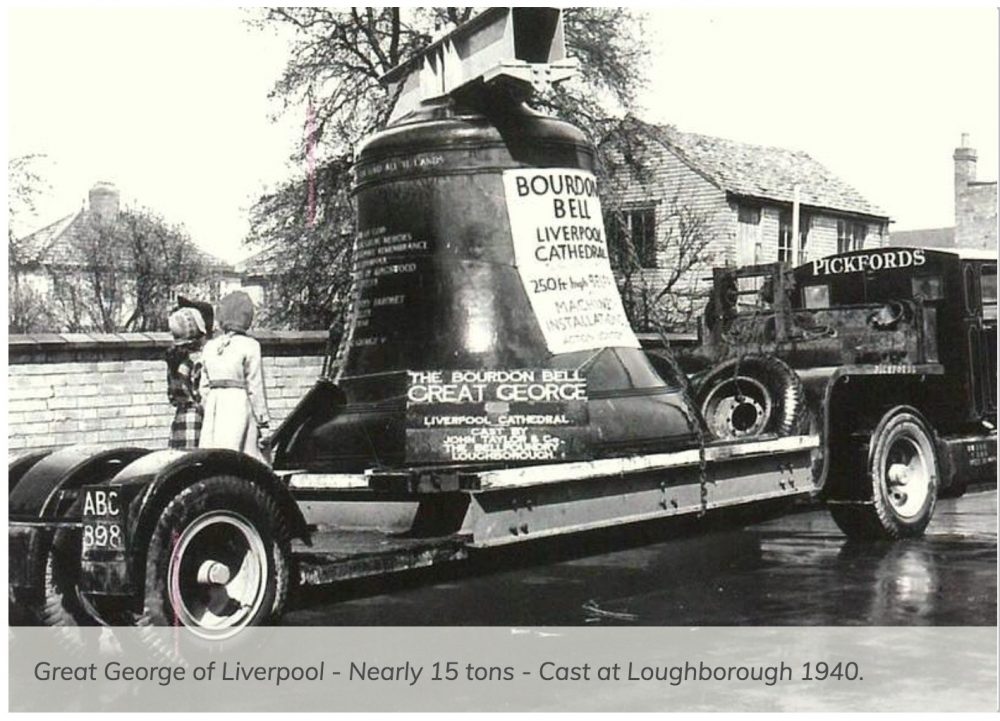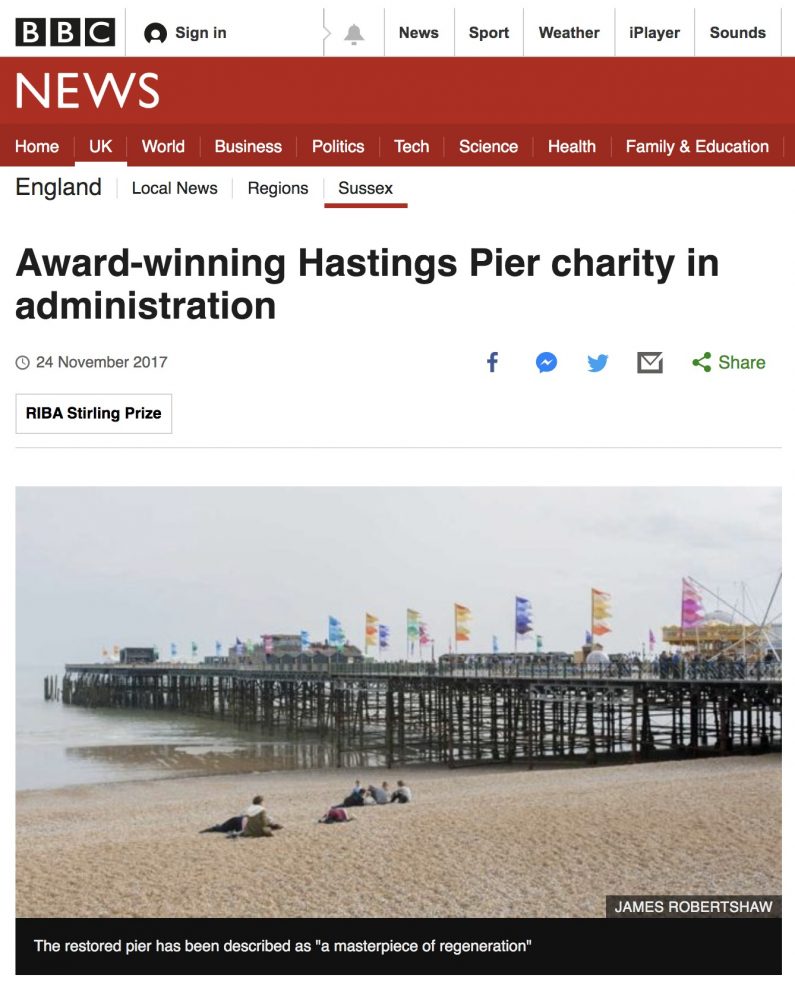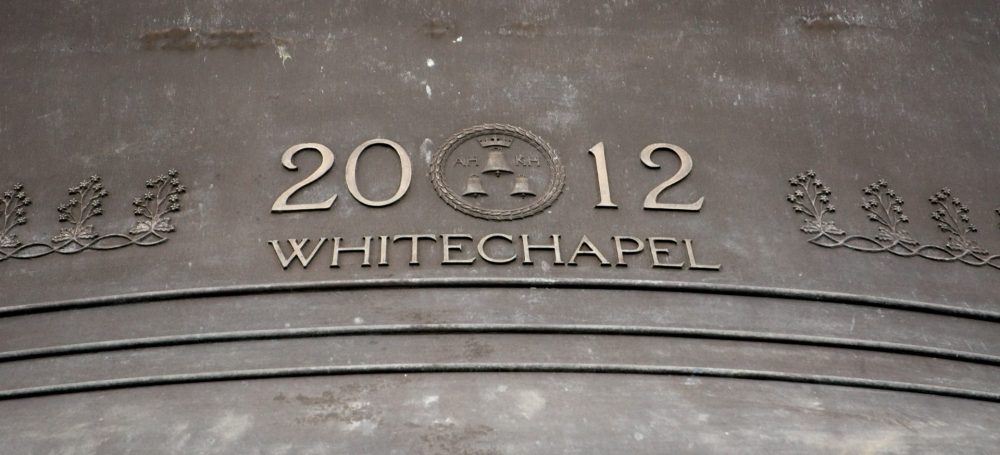The Whitechapel Bell Foundry development was granted planning permission by Tower Hamlets Council on 14th Nov 2019.
The plans include retaining the listed building and shopfront. Making internal alterations to provide new artists workshops and workspaces, a cafe, and a smaller foundry to make handbells. The old listed building will allow the public access, which they never had before.
The hotel will be built on an adjacent site and involves the demolition of a building from the 1980s – nothing of historic significance.
Following petitions and representations, the Secretary of State for Housing, Communities and Local Government, Robert Jenrick MP, has called in the planning decision on the Whitechapel Bell Foundry. In Nov 2020 his department will look again at the decisions made by Tower Hamlets Planning Department.
Basic Research
When I first saw the petitions in Oct 2019 I visited the Tower Hamlets Planning Dept. website. I found myself looking at plans that didn’t match what people were complaining about. Under the documents tab you’ll find plans and illustrations. I wrote about my findings here.

Misinformation
One outfit which is objecting to the plans, Re-form (previously known as UKHBPT), say that they are: “an independent charity which specialises in the restoration and rejuvenation of heritage buildings at risk of decay or demolition.” That’s exactly what the plans approved by Tower Hamlets are about – restoring and rejuvenating the old bell foundry buildings. On Re-Form’s website, under news, they say that: “The new owner, Raycliff Whitechapel LLP, has submitted a planning application which seeks to secure a Change of Use and development of the site as a 100-bed hotel, private members club…”
The Tower Hamlets planning officers have gone though the objections to the scheme and corrected the misinformation being banded about. Here’s what they say about the above:
Key points from the objecting comments on both applications are:
1. Object to change of use to a hotel/boutique hotel/bell themed hotel and consider that the optimum viable use of the site is to remain as a bell foundry
Officer note: the vast majority of objections received followed a proforma format which noted the above key points. Very few objections recognised that the proposed hotel is at the rear of the site in the unlisted/vacant sections of the site, not within the historic foundry, and that some foundry use is proposed to be retained along with new affordable workspaces etc
The Re-Form document goes on to say:
The United Kingdom Historic Building Preservation Trust (UKHBPT), an independent charity under the founding patronage of The Prince of Wales, has teamed up with Factum Foundation, a UK and Spanish registered not-for-profit organisation dedicated to the documentation and preservation of cultural heritage through the application of new technologies together with craft skills.
Through this partnership, the WBF can again become a viable foundry that specialises in bells but can also produce special edition artworks in bronze and other materials.
So the people who are objecting to the plans for the Whitechapel Bell Foundry have set themselves up as a rival business! They want to muscle in. They don’t own the site, Whitechapel Bell Foundry Ltd is still in business, just casting elsewhere in the UK. They own the registered name, and have long established experience and connections in the industry.
Running the Whitechapel Bell Foundry is a business. Starting out from the position of saving an old building and aiming to continue casting bells when there’s no demand, and amid tough competition, will simply burn through money. Film cameras appeared and disappeared. Kodak went bust. Respected camera manufacturers such as Canon, Nikon, Olympus who retooled with good digital camera systems find themselves losing customers to Apple iPhones with 3 lenses. Who’d have thought that a phone with tiny sensors could produce better quality than a Rolleiflex shooting on film. Nothing stays the same for very long.
The Competition:
Casting for artists
There are two top class foundries casting sculptures for artists in Tower Hamlets.

One is the Bronze Age Foundry in nearby Limehouse which has has cast many life sized sculptures recently. Another is AB Fine Art Foundry, a bit south of Devons Road DLR. AB are the Whitechapel Bell Foundry’s chosen partners for casting inside their old building.
Church bells
The demand for both churches and church bells dropped off a cliff some time ago. That’s why the Hughes family were forced to make changes into how their business was run. The existing players, in a declining market, would soon see off any new competition.

Whitechapel Bell Foundry Limited. They are still in business, but sold off their old site, which is almost in the City. Once upon a time their foundry was outside the city walls, surrounded by fields.

John Taylor & Co., Loughborough. They’ve been around since the middle of the 14th Century. They offer a comprehensive service including: Maintenance & Servicing, Conservation & Heritage, Building & Electrical Services, Tower Building Work & Floors’ Sound Control, Weatherproofing & Netting Louvres, Health & Safety in Towers, Automatic Chiming Systems, and Automatic Clock Mechanisms.
Matthew Higby & Company Ltd are a Somerset based engineering firm, whose work is primarily based around the the conservation, restoration or replacement of church bells, together with their associated fittings and supporting frameworks. They cast bells up to 2cwt (100kg) locally and outsource larger ones.
Westley Group Bells are now the Whitechapel Bell Foundry’s partner for casting tower bells.

Photo above: All Saints, Loughton, Buckinghamshire. Westley cast a new treble and tenor bells for a peal of six bells. The bells were tuned by Nigel Taylor at Whites of Appleton. Whites rehung all of the bells with new fittings and framework.
The Bell Rescue Fund was setup in 1998. It has since rescued over 400 bells. Operating under the name of The Keltek Trust they say they help to preserve our heritage by recycling redundant and surplus church bells. “Hundreds of churches have closed in England in the last seven decades. Some are vested in the Churches Conservation Trust, some are converted for other uses, and some are demolished. The Bell Rescue Fund buy bells at risk and put them into storage until a suitable destination can be found.”
A Cautionary Story
Enthusiastic locals decided to restore the derelict Hastings Pier. They raised over £14 million. The pier reopened in April 2016. In Nov 2017 Hastings Pier Charity went into administration. It’s a cautionary story.

International Trade

I photographed the bell of the Mary Rose in Portsmouth, where she was launched in 1511. Where do you think the bell was made? It was rung once every half hour, with 8 bells marking the end of each watch (shift) for the crew. It was cast in Antwerp 510 years ago.
We’re quite used to international trade in our private lives. Our clothes, smartphones, computers, have most likely come from halfway around the world. Were your kitchen appliances made in England?

The Olympic Bell, seen in detail above, was commissioned from the Whitechapel Bell Foundry. They designed the profile, lettering and tuned it to a low B. Since it weighs nearly 23 tons they outsourced the casting to Royal Eijsbouts of the Netherlands.

Newspapers failed to check
Rushanara Ali, MP for Bethnal Green and Bow encouraged everyone to sign the petition to Save the Whitechapel Bell Foundry, saying: “The council must prevent the developer turning this much-loved historic site into a private hotel.”
She’s not not the only one who failed to visit the Tower Hamlets planning Dept. website. Read their document which approved the plans in all its detail.



From the planning docs on TH website:
These are some of the comments from the previous owners of the site, Alan and Kathryn Hughes of the Whitechapel Bell Foundry Limited (WBFL) who wished for their comments to be made public.
1. WBFL ceased operating on-site in 2017, due to a downturn in orders and the unaffordable expense of maintaining a Grade II* listed property in a proper condition that is also safe for undertaking manufacturing work. WBFL is still an operating business operating elsewhere in the UK and has not closed.
2. Less than 25% of the site was used as a working foundry having just 4 employees before vacating the site. Over half the space was used for engineering work associated with bell hanging. There is no suggestion by UKHBPT (Re-form) that this part of the business would be reinstated. The remainder of the use of the site comprised light engineering, carpentry, office, shop and ancillary residential space.
3. Staff previously employed at the foundry either retired when operations ceased (7) or were reemployed by other foundries (6). Therefore their unique skills are not lost, but remain in use. Only two of the former staff lived locally.
4. Many objectors are confusing the business with the premises, which the company occupied for approximately 280 years, not 400 years as is being claimed. The business, WBFL, and the property (32 & 34 Whitechapel Road, 2 Fieldgate Street and land beyond) in which the business traded are two separate entities. The production of all WBFL products has continued at other sites.
5. Whitechapel Bell Foundry patterns, moulding equipment, tooling and designs remain in the possession of the WBFL for continued use. They remain in use under licence for continued manufacture of both tower bells and small bells, tower bells are being made by the Westley Group and the range of small bells by Bells of Whitechapel Ltd. The substantial company archives have been lodged with the London Metropolitan Archives, where their indexing and conservation is being paid for by WBFL so that they may be in future made available for public access, however they remain the property of WBFL.
The Rt Hon Robert Jenrick MP in trouble
The man who called in the Whitechapel Bell Foundry planning decision had to hurriedly backtrack on another planning application in Tower Hamlets a couple of weeks ago. Mr Jenrick admitted ‘unlawfully’ approving Richard Desmond’s 1,500-home development on the site of the Westferry Printworks in January.
Tower Hamlets Council were about to approve the development subject to a development levy that would have cost Mr Desmond £30 – £50 million. The council cited lack of affordable housing and a conflict with local conservation policy. It appears that Robert Jenrick gave it the OK without the levy the day before.
Richard Desmond has been a big donor to the Conservative Party, and after buying the Daily Express in 2000 (I read that) the newspaper switched from backing Labour to the Conservatives in 2004. Scotland Yard are looking into allegations.
Alan Tucker



An interesting article, and good to set the facts straight! It seems everyone is jumping on the objection bandwagon without a proper understanding of what is actually being proposed at the site.
Thanks for writing in Trudie